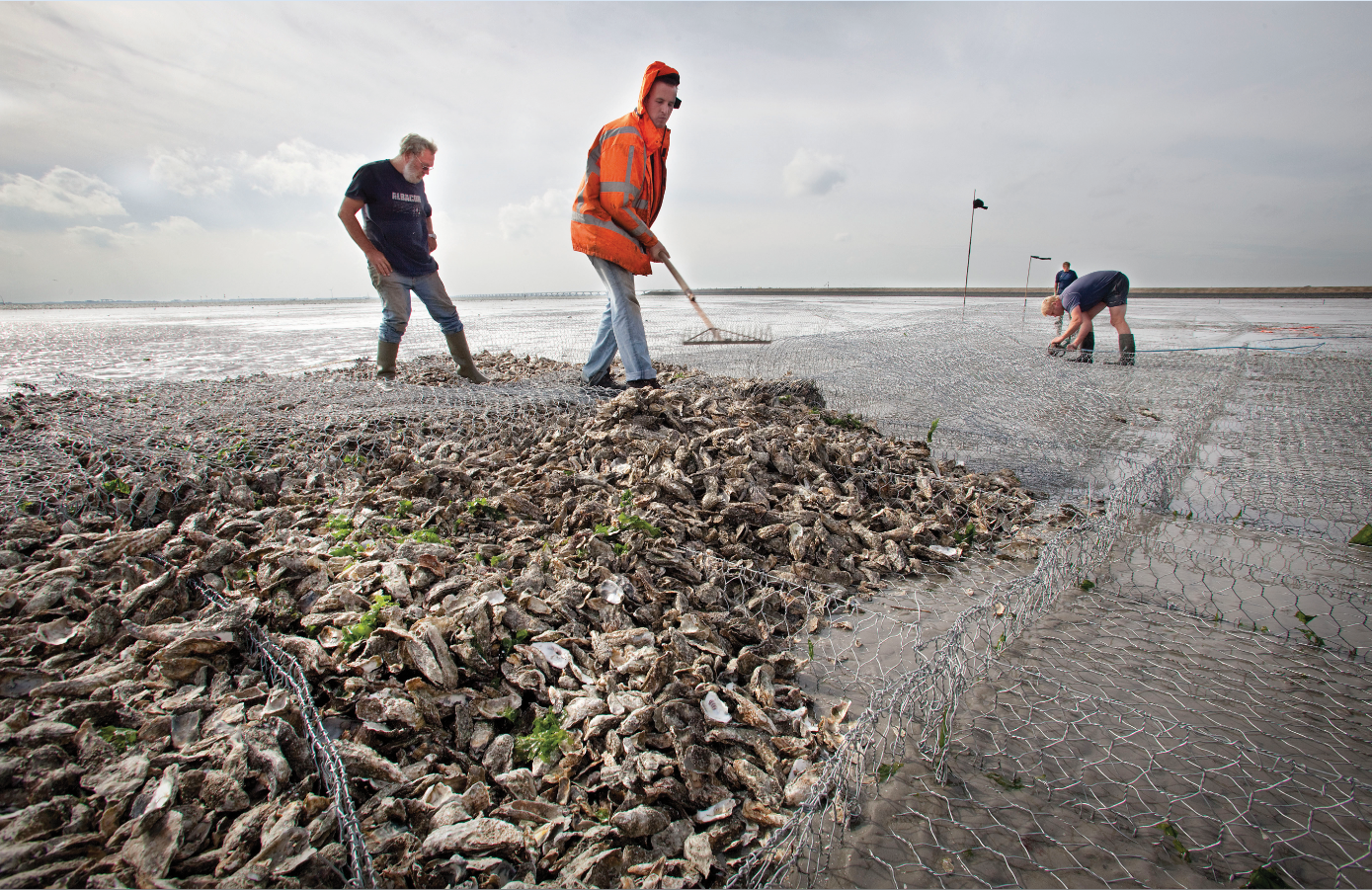Design of Reefs
Traditionally, especially the South East Asian fishers would put bundles of brushwood, boxes of leaves or coconut palm fronds in the water to attract fish. Nowadays, artificial reefs are constructed using many different materials.

Recycling
In the past decades, people started using recycled materials to create reefs. Over the years many concrete and steel structures are dumped in seas and oceans. Examples of these materials are ship wrecks, oil & gas platforms, subway wagons, army gear and tires, which were purposely sunk in the water to form a new reef. These structures give a good foundation for water plants and coral. Moreover, fish and other mammals find the protection needed to house.
Dismantling of the constructions is necessary to remove all possible harming parts; parts that could get loose, toxic materials or other harmful materials. The cleaned construction would be sunk at a selected location. Many of these artificial reefs have locally increased the flora and fauna population. However, these structures can have some adverse effects on the environment. For example, the tires that have been dumped in the sea appear to be toxic. Also corrosion is an issue with some type of steel structures. And the sea gets filled with structures that are slowly deteriorating the water quality.
Special designs
Recently, new specially developed materials are preferred for artificial reefs over recycling old materials. Reasons are that some of the recycled materials had a negative impact on the environment. Environmental laws have become stricter on rules to sink old waste and new (special) designs appear to have a better effect on the diversity and productivity of a reef.
New materials are specifically designed to increase the effectivity of the reefs use. They are mostly made of concrete, steel and geo-textile. Some examples are given below.
Reef balls
Reef balls are concrete structures in the shape of halve a ball with holes. These structures have been placed on the bottom of seas and oceans to create new eco-systems. The concrete shape forms good habitat for plants and coral and the hollow structure provides shelter for fish and mammals. Experience with artificial reef balls in New South Wales, Australia, has shown that after 2 years the richness of the artificial reef exceeded the natural one close to the artificial reef. This can probably be explained by the increased physical complexity of the reef balls compared to the relatively low profile natural reef.


Eco-reefs
Eco-reefs are constructions of ceramic. They are designed as a snowflake with multiple branches and therefore increasing suitable hard substrate surface. The structures are smaller (covering a surface of approx 1 m2) and lighter (60 kg) compared to the reef balls. The structures are anchored in the seabed with a rod and are easy to install.Eco reefs
Geo-textile
Geo-textile is used in tubes or containers which are filled with sand. Those tubes can be used as beach strengthening, groynes, berms and also as artificial reefs. These ‘soft’ structures appear to have environmental and technical advantages over ‘hard structures’ as rocks. The durability and survivability is high. Although somewhat sensitive for vandalism, the structure itself is very durable. Moreover, the flexibility of the materials prevents the negative impact on the sediment dynamics hard structures do have. Monitoring has shown that geo-textile structures form an excellent foundation for a broad diversity of marine species. Furthermore, it is a safe and user-friendly material. Geo-textile structures have been used in a number of artifiical reefs. Best known is the Narrowneck Reef, which will be discussed later.
Bio Rock
Bio Rock refers to a method of using steel and electricity to speed up growth of coral reefs. First, you place steel structures on the ocean floor. Through those structures you run electric currents, which crystallize the minerals dissolved in the water on the structure and form limestone. This type of limestone is similar to the structures created by coral reefs. Next to this limestone, the electricity also accelerates the growth of coral plants and other shell-bearing organisms. By placing broken pieces of the natural coral onto the construction, a new coral reef can develop fast.
The execution of this method is fairly simple and the shape of the construction can be adjusted to the specific needs of that area.
This mechanism can be used to restore destroyed coral reefs, and next to ecological advantages, the diving industry can also benefit. Moreover, the Bio Rock reefs appeared to increase the resilience of the coral, it recovers easier from damage.
Next to beneficially shaping coral reef, the structures provide solid shore protection as well. The open but solid structure is ideal to form a physical wave barrier. A disadvantage is that you always need a power source.
3D printing
A very new technique in development is 3D printing. 3D printing makes it possible to create very complex habitats. However, this is still under construction.
